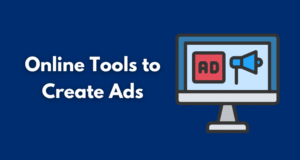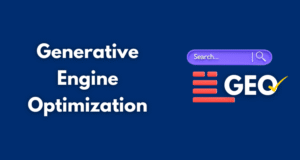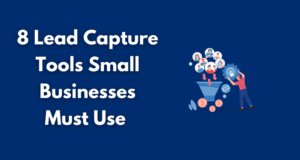- High website traffic doesn’t guarantee sales without an intentional conversion strategy.
- Funnel friction, unclear messaging, and poor UX are major reasons visitors drop off.
- Data should be used for insight, not just reporting—real improvements come from understanding behavior.
- Small, thoughtful changes like urgency cues and personalization can significantly boost conversions.
Let’s be real—watching your website traffic spike feels amazing. You’ve invested in content, social media, ads… and people are showing up. But here’s the part no one likes to discuss: even with impressive visitor numbers, your sales might still be neutral. It’s one of the most frustrating gaps in digital business—the chasm between attracting attention and closing the deal.
You’re not alone if you’ve ever thought, “Why aren’t more people buying?” Most brands focus so much on visibility that they forget to build a path toward conversion. Traffic is just the beginning. What happens after someone clicks matters even more.
In this post, we will unpack where brands typically drop the ball—and how you can shift your focus to create real, meaningful results. Let’s get into what’s holding back your sales potential.

Why High Traffic Doesn’t Always Mean High Sales
It’s easy to fall into the trap of thinking that more traffic automatically equals more revenue. After all, if your digital storefront is buzzing with activity, that must mean business is booming… right? Not quite.
The problem is that traffic is a surface-level metric. It tells you people are visiting, but not why they’re visiting—or what they do once they land on your site. You could have thousands of new visitors per day, but if your messaging isn’t resonating, your offers aren’t aligned with their needs, or your site experience isn’t backed by strong website development, they’ll bounce before you even know they were there.
Imagine throwing a massive party but forgetting to provide food, music, or seating. People show up, look around, and leave. The same thing happens in e-commerce when the experience doesn’t deliver on the promise that brought people in.
So what’s missing? Often, it’s a lack of alignment between the audience you’re attracting and the journey you’ve set up for them. This could be due to unclear CTAs, weak product descriptions, confusing layouts, or a mismatch between ad copy and landing page content. All of these things quietly kill your chances of making a sale.
The fix starts with understanding your audience better. Where are they in their buying journey? What problem are they trying to solve? Once you shift from chasing clicks to guiding decisions, your traffic becomes far more valuable—and so do your conversion rates.
Bridging the Gap With the Right Support

Getting more sales out of your traffic isn’t always about working harder—it’s often about working smarter, with the right kind of help. Many brands try to do it all in-house, but converting traffic into actual revenue takes expertise, experimentation, and the ability to analyze data with precision.
This is where partnering with specialists can make a difference. Whether it’s for optimizing your sales funnel, refining your messaging, or better understanding your customer behavior, outside insight can spot the blind spots you’ve stopped noticing.
If you’re running an online store, working with an ecommerce digital marketing agency can give you the edge you need. These agencies live and breathe ecommerce. They understand the nuances of online buying behavior, seasonal trends, platform algorithms, and customer psychology. They’re not just bringing in traffic—they’re helping you make every visitor count.
Moreover, they often bring a strategic mindset, focusing on the customer journey rather than one-off tactics. That could mean redesigning your landing pages to reduce friction, improving your product detail pages for mobile, or adjusting your ad targeting based on real-time buying patterns.
Sometimes, all it takes is someone from the outside looking in to see what you’ve been missing all along. Whether you’re stuck at the top of the funnel or losing people at checkout, the right partner can help transform confusion into clarity—and interest into sales.
Funnel Friction and Where Brands Lose Customers
You’ve got the traffic, maybe even the clicks. But then… silence. No sale. No email sign-up. Just a vanishing visitor. This is funnel friction at work—the hidden hurdles that stop people from moving smoothly through your site and taking action.
One of the biggest culprits? A clunky or confusing user experience. Think about how fast you leave a site when it’s slow to load, hard to navigate, or unclear about what to do next. Your customers are no different. They’re probably less patient. They’re gone if they land on your site and don’t instantly feel like they’re in the right place.
But friction isn’t just technical. It’s emotional, too. Does your brand feel trustworthy? Are your product photos high-quality and consistent? Are your shipping policies easy to find and understand? These small signals add up. They either build confidence or plant seeds of doubt.
Another common mistake is having too many steps between the product and the purchase. Every extra click, every form field, every vague instruction adds resistance. Even a tiny hesitation at checkout—like an unexpected fee or unclear return policy—can completely derail a purchase.
Then there’s the messaging mismatch. If your ad promises one thing, but your landing page delivers something else, people will feel tricked, even if it wasn’t intentional. That tiny disconnect is often enough to cause a bounce.
To fix this, walk through your own funnel like a customer would. Click every link, read every headline, and complete the checkout process on mobile. If anything feels confusing, slow, or sketchy, your audience is definitely feeling it, too. Clean it up and smooth it out, and you’ll be shocked at how much more your traffic starts to convert.
What Data Actually Tells You (And What It Doesn’t)

Let’s talk numbers. Metrics are your best friend when diagnosing what’s wrong or right. But here’s the kicker: data is only helpful if you ask the right questions.
Take bounce rate, for example. A high bounce rate might mean people aren’t interested in your content… or they found exactly what they needed on that page and had no reason to stay longer. Without context, numbers are just noise.
The same goes for average session duration, pageviews, and click-through rates. Alone, they don’t paint the whole picture. You need to dig deeper into the why. Where are people dropping off? Are they hovering on product pages but not adding to the cart? Are they abandoning checkout at the payment stage? This kind of behavioral data is way more helpful than broad surface stats.
And let’s not forget the trap of vanity metrics. Getting excited about social likes, follower growth, or ad impressions is tempting. But if those numbers aren’t leading to conversions, they’re just… well, vanity. They look good in a report, but don’t move the business forward.
Instead, focus on insights that can drive action. Use heatmaps to see where people are clicking (or not clicking). A/B test your headlines and CTAs. Segment your traffic to understand which channels bring the most engaged visitors. These are the breadcrumbs that lead to real improvements.
Data should help you tell a story—not just about where people came from but also about what they did, what held them back, and how you can better serve them next time they visit.
Small Shifts That Make a Big Difference
Here’s the good news: turning your traffic into sales doesn’t always require a complete overhaul. Sometimes, it’s the tiniest tweaks that have the most significant impact. The kind of shifts that take minutes to implement, but drastically change how your audience feels when they land on your site.
Let’s start with urgency. People tend to delay purchases without an apparent reason to act now. Adding subtle urgency—like limited-time offers, low stock notifications, or countdown timers—can create just enough pressure to drive a decision. The trick is to make it feel genuine, not gimmicky.
Then there’s clarity. If your visitors can’t figure out what you’re offering within the first few seconds, they won’t stick around to decode your message. Clear, benefit-focused headlines, simple navigation, and direct CTAs go a long way. Confusion is the enemy of conversion.
Social proof is another easy win. Testimonials, reviews, media mentions, and trust badges instantly build credibility. People don’t want to be the first to try something; they want to know others have had a great experience. Even small quotes from happy customers can do a lot of the heavy lifting.
Don’t overlook personalization either. Even basic segmentation—like tailoring product suggestions based on browsing history or showing different banners to returning visitors—makes your site feel more innovative and relevant. People love to feel seen, especially in a crowded online space.
And finally, think beyond the sale. What happens after someone makes a purchase? Are you following up with thoughtful emails? Offering incentives for repeat business? Building loyalty is what turns a single transaction into a lasting relationship. That’s where the real growth happens.
Conclusion
Driving traffic is only one piece of the puzzle. Real success comes from creating an experience that makes people want to engage, trust, and ultimately, buy. If you’re not turning visitors into customers, the problem isn’t your traffic—it’s what happens after they arrive.
You can transform your site from a digital storefront into a conversion machine by rethinking your funnel, clearing out friction, using data with purpose, and making a few high-impact changes. Most brands overlook this stuff. Now you don’t have to.









